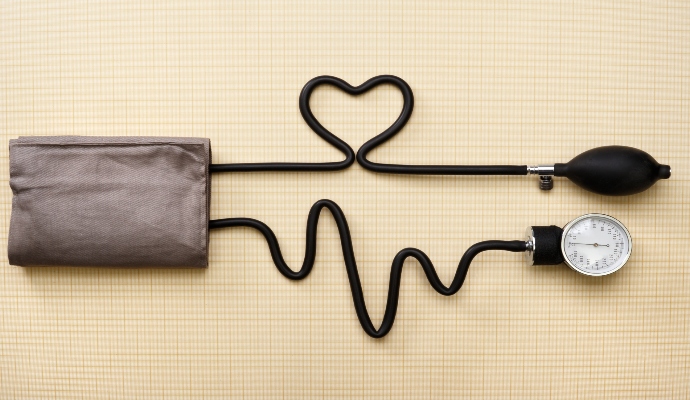Amid Rise in Hypertension-Related Telehealth, Racial Gaps Persist
Hypertension-related telehealth visits rose in 2020, remaining elevated after the pandemic’s peak, but use among Black adults remained lower than among other races.

Source: Getty Images
- Medicaid beneficiaries across racial and ethnic groups increased their use of telehealth to manage hypertension during the COVID-19 pandemic, but the increase in use was lower among Black patients than other groups, according to new research.
Published in the journal Telemedicine and e-Health, the study examined the trends and costs of telehealth-enabled hypertension management among individuals enrolled in Medicaid. Nearly half of United States adults (119.9 million) have hypertension, of which only one in four (27 million) have their hypertension under control, according to data from the Department of Health and Human Services (HHS). High blood pressure is also more common in Black adults than in White, Asian adults, or Hispanic adults, the Centers for Disease Control and Prevention (CDC) noted.
For the study, researchers from the CDC, Applied Science, Research, and Technology Inc., and Cherokee Nation Businesses used the MarketScan Medicaid database to examine outpatient visits among people with hypertension 18 to 64 from January 1, 2017, to December 31, 2021.
Between 2017 and 2021, there were 229,562 adults aged 18 to 64 with hypertension, continuously enrolled in Medicaid and without a pregnancy diagnosis. Of this study sample, 49.9 percent were White, 35.2 percent were Black, 1.71 percent were Hispanic, and 13.3 percent were classified as other race and ethnicity.
The monthly average of hypertension-related telehealth outpatient visits per 100 individuals from January 2019 to February 2020 was 0.01. This figure shot up to 6.13 from February 2020 to April 2020, declined to 3.41 in June 2020, and dropped to 1.83 from July 2020 to December 2021.
Meanwhile, the monthly average of hypertension-related in-person outpatient visits per 100 individuals rose from 52.63 in April 2020 to 61.97 in June 2020. This figure rose to 64.67 between July 2020 and December 2021.
Researchers found that Black adults had more hypertension-related in-person outpatient visits during the pre-COVID-19 and COVID-19 pandemic periods, with the monthly average number of hypertension-related in-person visits per 100 adults totaling 84.39 for Black patients in April 2020 versus 34.14 for White and 29.79 for Hispanic individuals.
However, hypertension-related telehealth visits varied across racial and ethnic groups during the COVID-19 pandemic period, with lower utilization observed among Black adults. The proportion of telehealth visits to total outpatient visits reached 19.82 percent for Hispanic, 13.90 percent for White, and 7.58 percent for Black adults in April 2020.
Between July 2020 and December 2021, this figure dropped to 4.79 percent for Hispanic, 3.42 percent for White, and 2.20 percent for Black adults.
Further, researchers determined the average cost of telehealth per visit was lower for Hispanic ($69.47) than for Black ($84.35) and White adults ($82.65). On the other hand, the average cost of in-person visits was higher for White ($290.12) than for Black ($246.63) and Hispanic adults ($246.32).
Thus, researchers noted that while hypertension-related telehealth use rose rapidly following the onset of the pandemic and remained elevated in 2021, disparities remained among racial and ethnic groups.
“Research that further examines the factors fueling disparities in telehealth use and cost — while contextualizing the role of race and ethnicity — may help reduce disparities, improve access to care, and support hypertension management,” they concluded.
This study adds to our understanding of the challenges of virtual hypertension management.
Prior research has indicated that virtual care modalities, like remote patient monitoring (RPM), can improve hypertension outcomes but are associated with an increase in expenditure.
The study examined outcomes and healthcare spending at practices where 25 percent or more hypertension patients received RPM, categorized as “high-RPM practices, and those where less than 2.5 percent of hypertension patients received RPM, defined as “low-RPM practices.”
From 2019 to 2021, hypertension patients at high-RPM practices experienced an increase in hypertension medication fills and reductions in the number of hypertension-related emergency department (ED) visits and hospitalizations. However, patients at high-RPM practices experienced relative increases in the number of primary care provider (PCP) office visits and PCP office visit spending.
